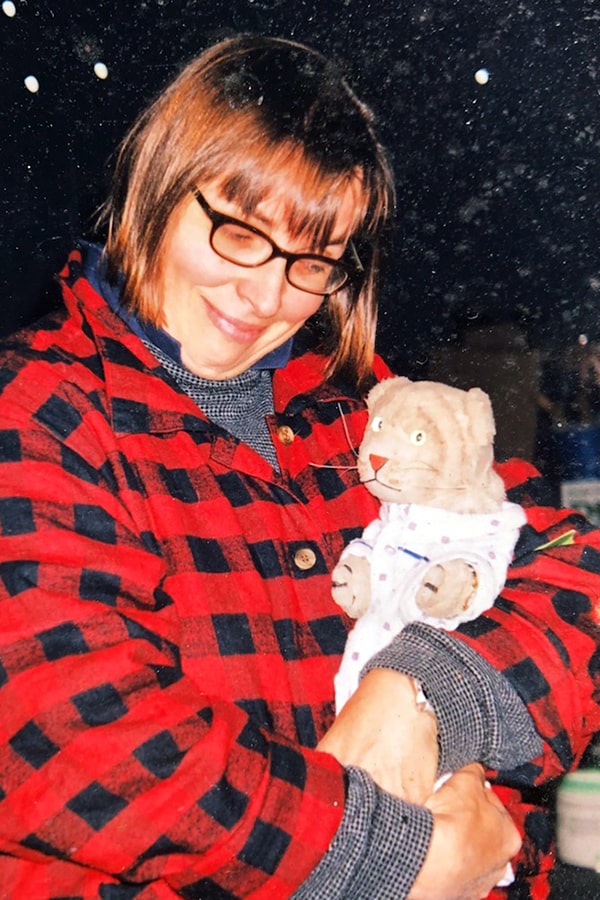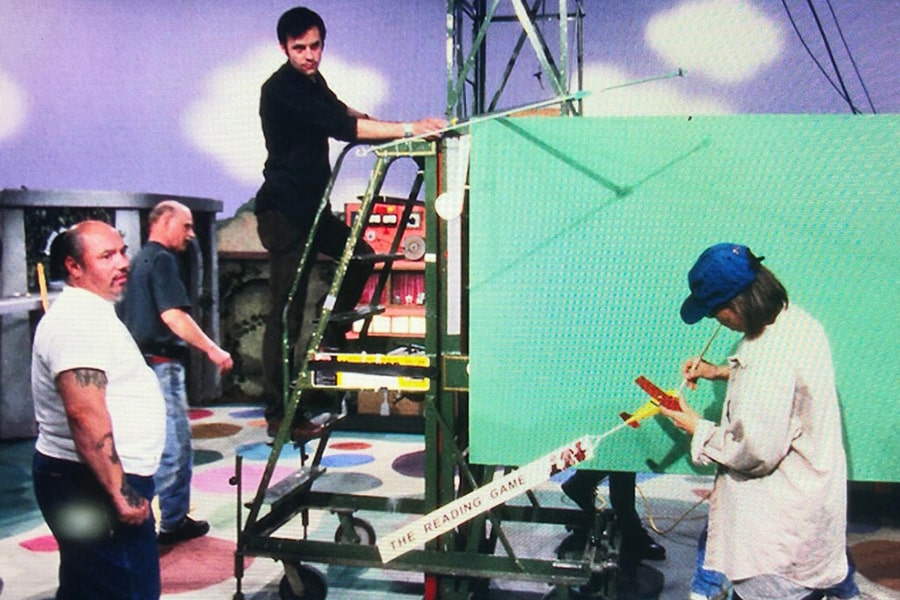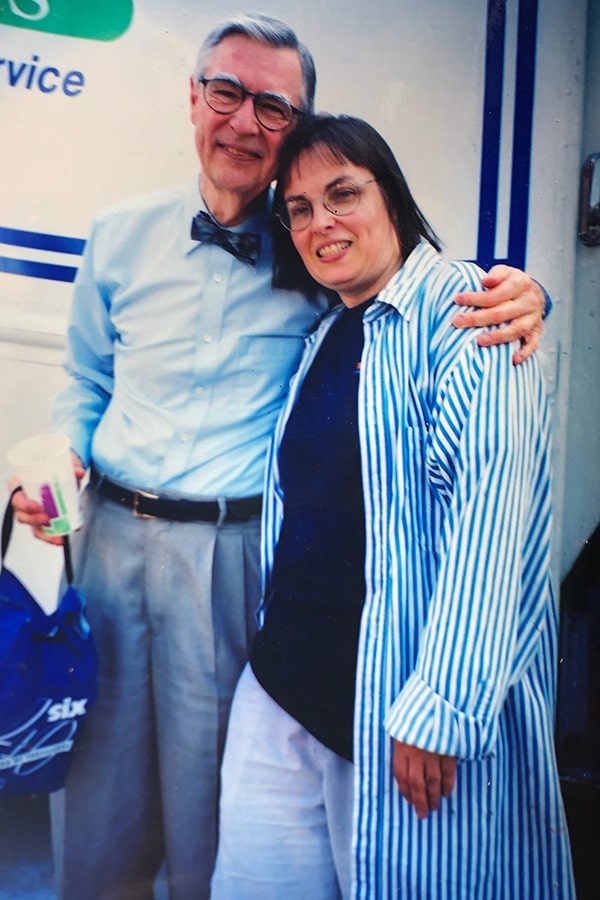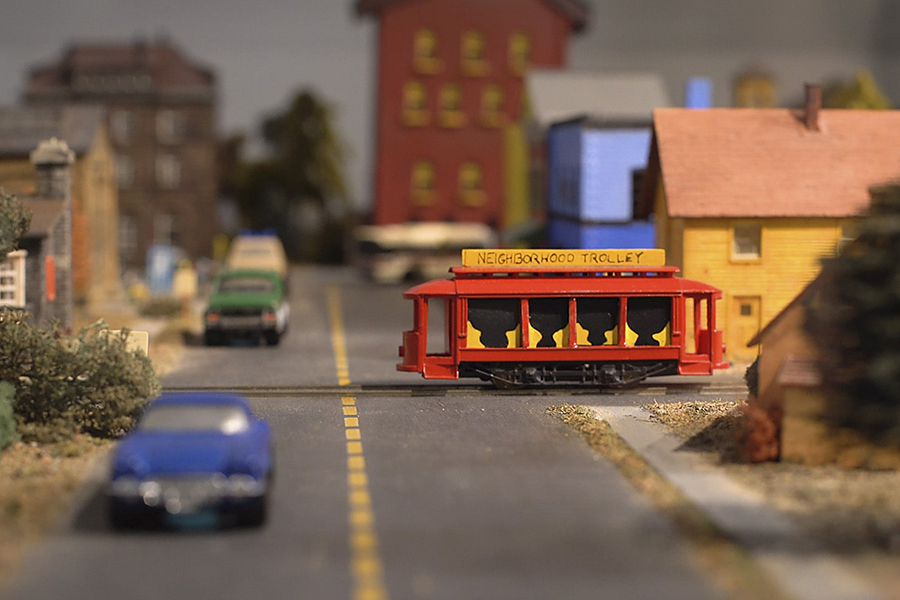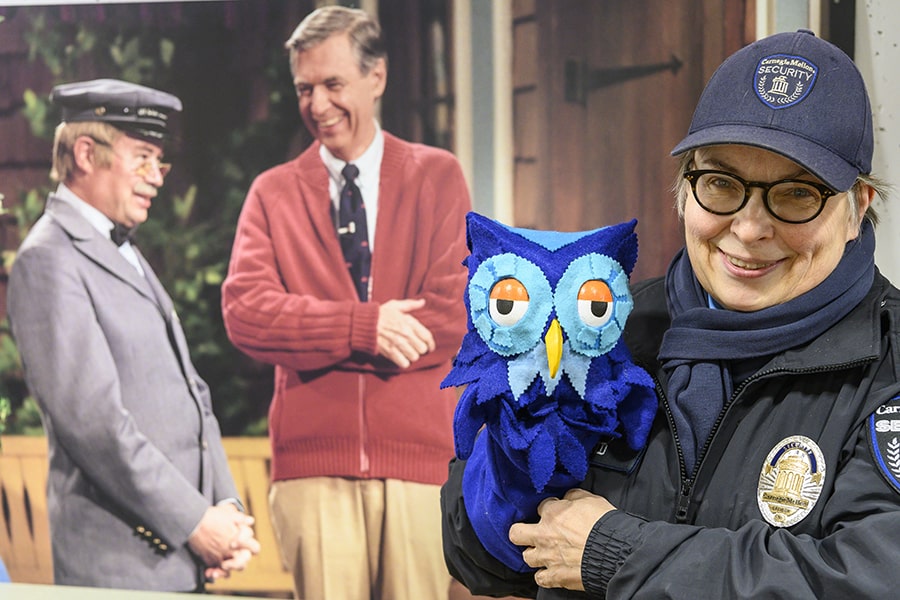
Borland Shares Perspective on "Mister Rogers' Neighborhood"
By Kelly Saavedra
Kathy Borland took the scenic route to Mister Rogers’ Neighborhood on a career path that starts and stops at Carnegie Mellon University.
Born and raised 90 miles north of Pittsburgh, Borland believed life had more to offer than her tiny hometown of Oil City, Pennsylvania. A talented artist with an insider’s knowledge of carpentry — her grandfather and uncle built furniture for a living — she began venturing off to Ontario, Canada, each year hoping to catch a glimpse of the world-renowned Stratford Shakespeare Festival.
“I loved the set designs and costumes,” she said, “but you could never get tickets.”
When legendary British actress Maggie Smith had the lead role in Shakespeare’s “As You Like It,” Borland camped out overnight to be first in line for any forfeited tickets that might go on sale the day of the performance. She awoke the next morning to find herself surrounded by dozens of other ticket hopefuls, one of whom was a CMU student whose passion for the university would prove contagious.
“I started talking with this guy standing beside me about how much I wanted to work in theater, and he started telling me all about what a fantastic education I could get at CMU,” she said.
The next trip she made was to Pittsburgh, where she walked into CMU’s costume shop and met Professor Barbara Anderson. The two hit it off, Borland said, and after showing her portfolio, she got accepted into the set and costume design program.
Shooting for the Moon
Borland first worked on Mister Rogers’ Neighborhood as a student assistant to Anderson, who designed and created costumes for the popular children’s television program and remains one of Borland’s lifelong friends.
“Fred [Rogers] was good with music, interpersonal relationships and that whole kid thing, but he wasn’t a visual person,” she said. “He didn’t realize that often what he was writing was very difficult to do visually and financially. He would write shows that required incredibly difficult costumes, and Barbara would have to execute it.”
Among the more memorable ones were a bass fiddle costume; a dinosaur costume for Purple Panda, who “already was a guy inside a Purple Panda costume” as Borland was quick to point out; and two half-moon suits for actors who would form the whole moon when they stood together.
“How do you put a guy in a half moon?!” Borland howled, recalling how they rose to such challenges.
After graduating with her Master of Fine Arts degree, Borland set off for Los Angeles. A friend in television was planning to give her his job so he could move on to something else, but homesickness led to her return within a year.
She later found work in New York City, thanks to CMU’s strong networks in the business on both coasts, but “beelined it” back to the ‘Burgh when Mister Rogers’ producer called to tell her the show's art director had just quit.
Keeping It Together
“Nobody thought Mister Rogers’ Neighborhood would last 30 years!” Borland exclaimed. “The set was old, and I don’t mean ‘old’ as in trying to maintain an antique table. We were trying to maintain antique cardboard and tape, things that were only meant to last a day. It was all very fragile.”
Sometimes the knob would fall off a door on one of the sets when Rogers would go to open it. Or the brown picket fence would come back from storage sans pickets. Having a world-class education in every type of adhesive comes in handy during times like these.
“The knob was held on with joint compound and other stuff. It had already been put back on about 50 times, so the screws wouldn’t hold,” Borland said. “What was great about having an education in theater was that you learned how to fix things quickly and on the spot. And you also learned to have six other backup plans ready, in case that first thing you tried didn’t work.”
The bathroom fixtures presented a different kind of challenge.
“We broke the sink one night while installing the set, and the show was scheduled to tape the next morning,” Borland said. “The fixtures were purchased in the 1970s and they were mint green, so you couldn’t just run out to Home Depot and get a new one. You had to know how to paint a sink, or a tub, or a toilet in a way that the paint wouldn’t peel, not to mention match it to the color of the other fixtures.”
Rogers knew it was important for children to see consistency each time they tuned in, Borland said, from the bathroom sink to the living room curtains to his "coming in through the door, singing that song and putting that sweater on." As art director, Borland’s real challenge was to leave her ego and her artistic sense at the door.
“What he was doing was creating a safe place for children to go every day, where they would get the love and respect they needed,” she said.
Giving Back
Borland remained art director until Mister Rogers’ Neighborhood ended its 33-year run. Nearing retirement but not yet ready for it, she returned to her beloved alma mater where she now works as a campus security guard for the CMU Police Department.
Borland had developed close ties with the CMUPD over the years while trapping feral cats on campus for the purpose of getting them spayed or neutered. Her prior experience working in an educational environment as an art teacher, problem-solving skills and knowledge of the campus grounds landed her the job, which she said lets her give back to the university that gave her so much.
“I love CMU!” she said. “CMU got me out of Oil City. It gave me lifelong friendships, and it gave me all those wonderful years working with Fred [Rogers].”
While some may find it a stretch to go from art direction to campus security, Borland doesn’t see it that way.
“When I stand in the middle of campus, I can look this way and see WQED where I spent all those wonderful years, and I can look that way and see where Fred lived,” she said. “I really just moved over a few feet.”
Moving Forward
When Rogers passed in 2003, Borland said he left a vacuum that no person, group or philosophy has filled.
“He was so remarkable. As soon as you walked into a room, he wanted to know all about you. He truly cared,” Borland said. “And what was truly remarkable was he was absolutely the same person off camera as you saw on camera, except he took the sweater off and put the glasses on.”
She hopes people will carry on his legacy by being kind to one another, a message she feels is more relevant today than ever.
“Social media has made it easier for people to be anonymously cruel. There’s a distance that has allowed people to be less kind,” Borland said.
“Kindness was the gift Fred shared through television, and it’s a gift we can share through all media.”

